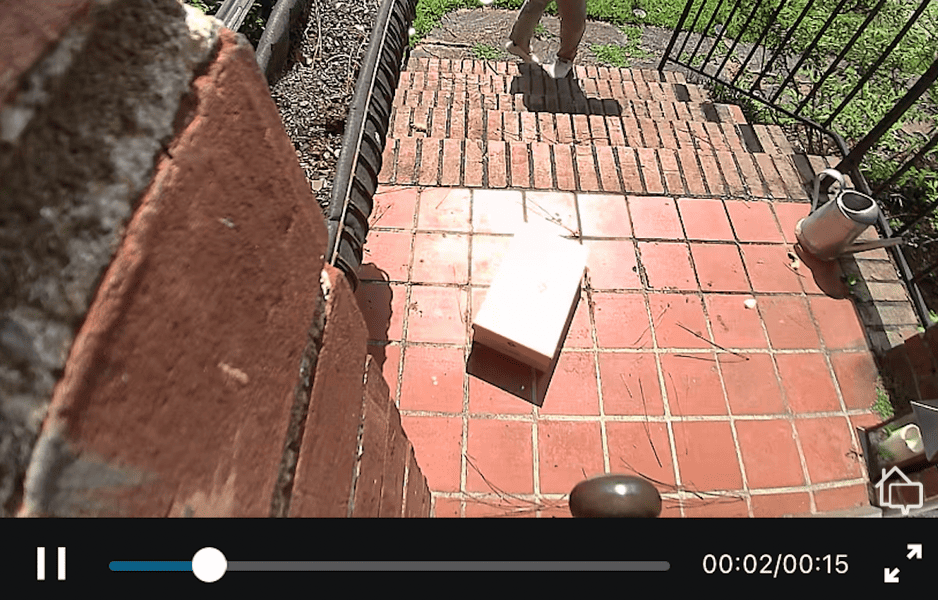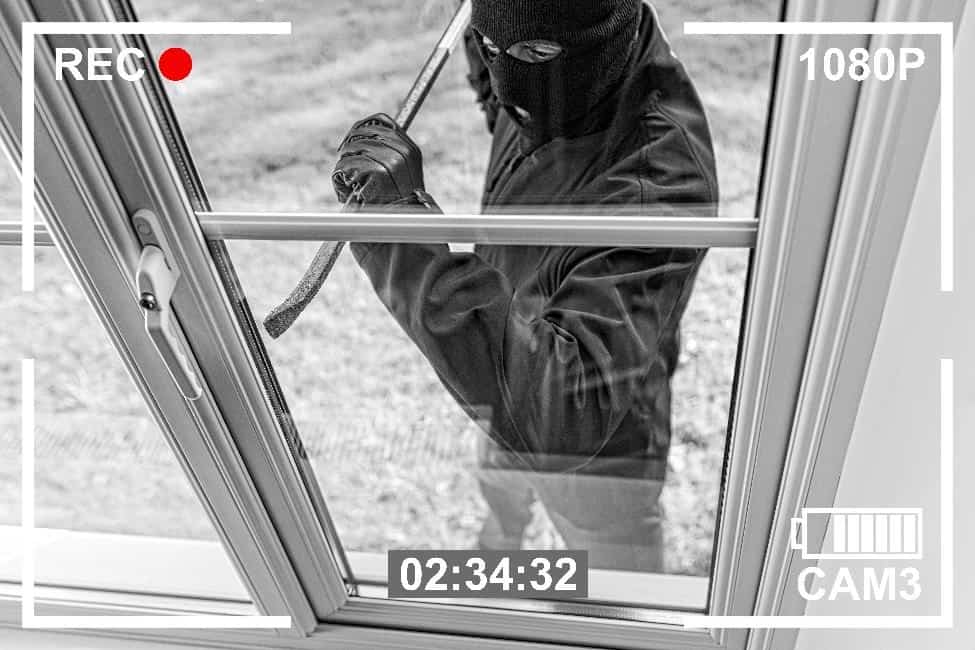
Picture this: A masked man sneaks around your neighborhood under the cover of darkness looking for a house with no signs of a home security system. The homeowners have no idea the burglar is out there learning their habits and plotting his next move. While this might sound like a movie scene, it’s not as uncommon as you think.
Every day, crafty criminals scope out houses looking for any weaknesses in security or routines. They choose targets with a simple goal of maximizing their reward while minimizing their risks. So, if you make sure they need to take a significant risk to rob your home, they’ll move on to an easier target.
To make sure burglars see your house as a risk, you need an understanding of how they think. That’s why we’re going to take a deep dive into the mind of a burglar by covering the following topics:
Who Commits Burglaries?
When you imagine a burglar, you probably picture a younger man in all black clothing, wearing a dark mask and gloves. You might be surprised that most of our preconceptions about who commits burglaries pans out in real life, too.
Statistically, burglars are more likely to be male, with over 80% of burglaries in the United States being committed by men.1 Burglars also tend to be younger, with those 35 years old and younger committing over 60% of burglaries.2 But, that trend falls off at about 20 years old with those 20 years old and younger barely committing 15% of burglaries.
Beyond these demographics, note that education level also plays a massive role in a person’s likelihood of committing property crimes. In fact, this relationship is so strong that a study by Stephen Machin found that just one additional year of education reduces the likelihood of a man committing property crimes by somewhere between 20% and 30%!3
>> Read More: How Common is Burglary in the U.S. Today?
The 3 Types of Burglars
Securing your home isn’t a one-size-fits-all deal. Different burglars play different games, and to win, you need to know who’s on the other side of the line.
Opportunistic Burglars
Think of the opportunistic burglar as the spur-of-the-moment thief. They’re the ones who see an open window or an unlocked door and think, “Why not?” For the opportunistic burglar, it’s all about easy pickings like cash, laptops, tablets, and phones.
Now, if an opportunistic burglar sees a visible security system in place, more often than not they move on and look for an easier target. They avoid risks above all else. So, simple security measures like smart lights and obvious security cameras offer enough protection against opportunistic burglars.
Pro Tip: For added protection, add solar-powered floodlights to your home security outfit. Or check out these motion sensor lights that can keep burglars at bay.
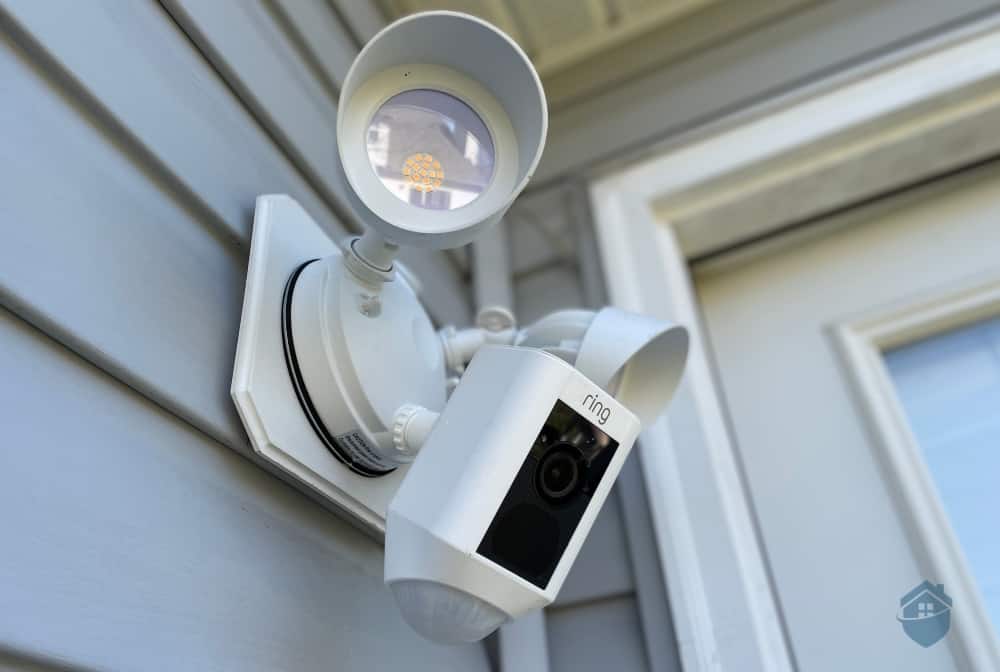
The Ring Floodlight Cam
Professional Burglars
You can picture a professional burglar as a modern day Neal Caffrey from the show White Collar. With suave charm and extensive knowledge, they can crack elaborate security systems while vanishing without a trace.
That’s right, the professional burglar is a completely different beast. With years of experience under their belt and regular research, they can outsmart common home security systems. They also meticulously plan their burglaries, with 33% of burglars spending days gathering information on their target.4
Unlike opportunistic burglars, professional burglars only seek out high-ticket items like jewelry, gold, and even car keys.
Deterring professional burglars is a tough task. Since they can outsmart most home security systems, any security without a follow-up response from law enforcement or the homeowner is ineffective. But, top-rated monitored security systems can make professional burglars think twice.
Brute Force Burglars
Entering homes through brute force, these burglars focus on unoccupied houses. They look for signs of a vacant house such as uncollected mail or an unmoved car. Once they spot a target, they quickly break in by knocking down the front door or smashing a window.
Since they only target unoccupied homes, preventing a brute force burglary comes down to giving the appearance that someone is always home. When going on vacation or leaving your house for an extended period, ask a neighbor or friend to collect your mail and move your car. You can also use a wireless monitoring system that allows you to talk through the device, giving potential burglars the impression that you’re home.
>> Check Out: 5 Sneaky Tricks to Keep Burglars Away While You’re on Vacation
Burglars Learning from Experience: Dysfunctional Expertise
‘Dysfunctional expertise’ is a term coined by Claire Nee, a researcher from the University of Portsmouth who spent over 20 years studying crime and theft.5 Through interviewing burglars throughout her career, she realized they became experts in their field. Just like anyone with a regular 9-to-5 job, as you practice a specific skillset you get better over time. This applies to burglars, as well.
Over time, burglars start to develop something like a spidey sense for spotting potential targets. They can take one look at a property and spot its weak points immediately, instinctively picking up on cues that signal an easy score. Most don’t even realize they’re doing it, too.
And it goes beyond finding targets. This ‘dysfunctional expertise’ extends into the methods they use to break into homes, making experienced burglars tough to stop for homeowners and law enforcement alike.
FYI: Did you know one-third of burglaries occur without signs of forcible entry? This means the burglar simply walked into the house without breaking a single door or window. They might have snuck through the garage or opened an unlocked front door. Either way, this shows how important locking up your house is for preventing burglaries.
A Burglar’s Process
From the initial identification of targets to the execution of the burglary, most burglars follow the same overall process. The following is what goes through a burglar’s mind as they choose their target and execute on their mission of breaking into a home.
1. Scouting for Targets
First, burglars start the process off by identifying potential targets. This usually happens during everyday activities like when the burglar walks their dog or drives to do an errand. They look for homes without visible security cameras as well as owners that regularly leave windows open and doors unlocked.
2. Casing the Property
While casing a property, burglars can go through more notepads than a lawyer studying for the bar exam. They take notes as they observe the property over time to learn about the occupants’ routines and identify the most likely time for nobody to be home. Most burglaries occur between 10 a.m. and 3 p.m. when most people go to work or school for this exact reason.
3. Planning the Entry
With the information gathered during the casing phase, the burglar then plans their method of entry. They look for the path of least resistance, whether that’s an open window, an unlocked door, or a back door concealed from public view.
4. Executing the Burglary
During the burglary, the goal is to get in and out as quickly as possible. Most burglars aim to complete the entire burglary within 10 minutes. During this time, they stay on high alert for any signs of a returning resident or nosy neighbor. If an encounter does happen, they already planned a way to deflect suspicion and buy time to escape. To avoid suspicion, they might pretend to be a delivery person or a neighbor looking for their pet.
5. Post-Burglary Activities
After the burglary, the thief lays low to avoid attracting attention. They quickly sell off their stolen goods to get rid of any incriminating evidence. Then, the process starts all over again with the lessons learned from each burglary informing their methods for the next one.
Did You Know? The median police response time is 10 minutes, the same amount of time it takes a burglar to get in and out. This is why a security system that alerts you and your local law enforcement immediately is critical. You don’t have a single minute to spare.
What Makes Your Home a Target?
Now that we’ve got a better understanding of a burglar’s process, let’s look at some factors that might make your home an attractive target for these intruders:
- Lack of Visible Security Measures: A home without visible security measures draws in burglars. The absence of security alarms, home security cameras, or even basic window and door locks makes your home an easy target for opportunistic burglars.
- Concealed Entry Points: Entry points hidden from the street or neighbors appeal to professional burglars. It offers them the opportunity to break in without being seen after studying the occupants’ daily routines.
- Signs of Absence: Unlit homes at night, uncollected mail, or overgrown gardens can signify that a property is unoccupied. This is when brute force burglars are most likely to strike.
- Valuable Items on Display: Visible signs of wealth, such as expensive cars, electronics, or artwork attract every type of burglar.
- Location: Homes located near alleyways or in neighborhoods with easy access to main roads give burglars an easy escape route.
- Information Shared on Social Media: Nowadays, social media has become a key tool in a burglar’s toolkit. Posting about your vacation plans or sharing photos of an expensive new gadget gives burglars the information they need to plan a burglary.
Is Your Home Being Cased? 7 Common Warning Signs
Worried if your home is a sitting duck for burglars? You’re not alone. Homeowners around the country worry that their home will be the next target of local criminals. But, burglars usually case a home before they choose it as their next payday.
‘Casing’ is the process of burglars and criminals observing a property over time to gather information about the residents’ habits and security measures. They use this information to create a plan about how they can break into your home and steal valuables. Here are common things that go through a burglar’s mind while casing out homes.
- Unfamiliar Vehicles: An unfamiliar vehicle parked near your house with someone in the vehicle looking at your house can be a sign of casing. Expect the person in the vehicle to do something innocuous like reading a newspaper or using their phone to hide the fact that they are watching your house.
- Door-to-Door Solicitations: While most door-to-door solicitations are just someone doing their job, it could be a door-to-door scam with the solicitor looking to gain entry into your home and steal your belongings.
- Loitering: Anyone loitering in your neighborhood observing homes and taking notes could signify that they are casing a home in the area.
- Markings on Your Property: Some burglars work with a small team and use subtle signs, like markings in chalk or paint on their target’s property to signal to their team.
- Frequent or Fake Delivery Persons: Keeping track of your expected deliveries can help you identify fake delivery persons trying to case your house.
So, what can you do if you notice these warning signs? You can report suspicious activity to your local law enforcement. With this information, they can begin patrolling your area more frequently, which can scare off any potential burglars. You can also inform your neighbors so they can watch for suspicious activity, as well.
On top of informing your community and local law enforcement, you can also enhance your home security measures. Consider installing security cameras or an alarm system to discourage any potential burglars.
Burglar-Proofing Your Home
Creating the perfect burglar-proof home would be a daunting task. Thankfully, you don’t have to. You just need to make breaking in difficult enough that your security discourages any potential burglars. Here are four ways you can make your house a bad target for burglars:
Install a Home Security System
A visible home security system can deter every type of burglar. Your system should include alarm systems, security cameras, and security signs or stickers stating the security of your home. Beyond visible deterrents, you can also incorporate concealed monitored security to thwart professional burglars brazen enough to target a home with visible security.
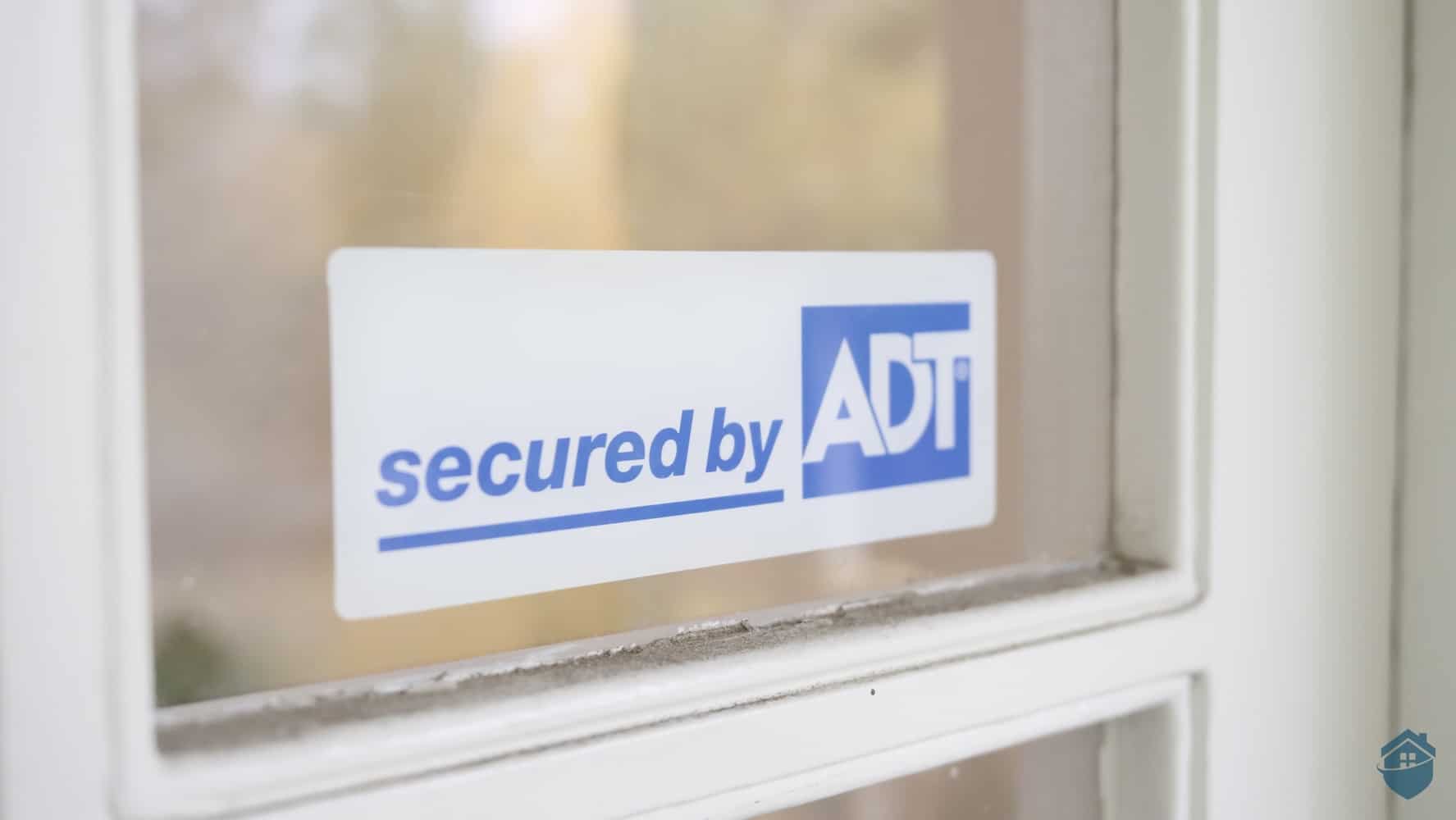
Secured by ADT Decal
Secure Your Doors and Windows
Ensuring your doors and windows are locked every time you leave the house is a simple yet effective step in deterring burglars. You can take this a step further by installing deadbolt locks, reinforcing doors and door frames, and securing air conditioning units to prevent burglars from pushing them in. To secure your windows, you can install window security film, window alarm sensors, or reinforced glass.
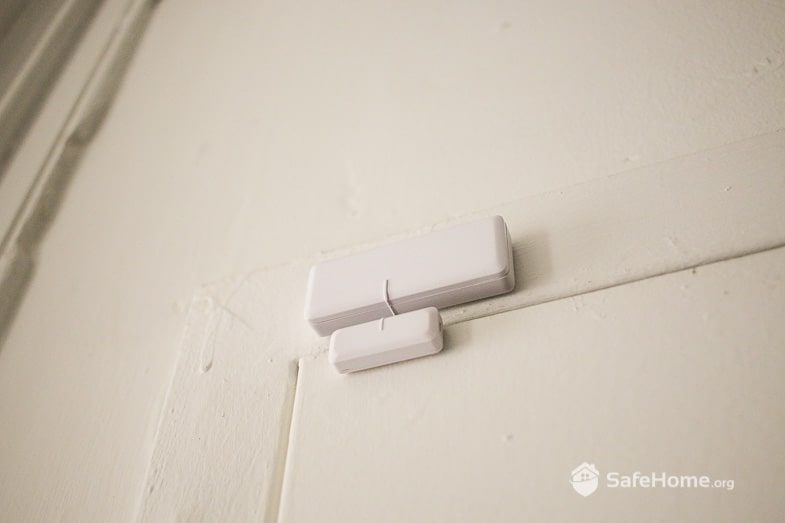
Vivint – Door/Window Sensor
>> Read About: Best Smart Locks
Maintain a Line of Sight to Your House
Keep the areas around your doors and windows clear, as any obstruction can provide a hiding place for burglars. Trim trees and shrubs near your windows, install outdoor lighting, and avoid high fences, if possible. Remember, you want to make it difficult for a burglar to stay hidden while robbing your house.
Get to Know Your Neighbors
Good neighbors are a great defense against burglars. When you get to know your neighbors, you can all watch out for unusual activity at each other’s homes. Once someone notices unusual activity, they can immediately call the homeowner, who can notify law enforcement if necessary.
>> Read More: A Nation of Neighbors
Final Thoughts
While burglars may seem cunning, you can outsmart them with the right knowledge and precautions. Understanding how they think, target homes, and execute break-ins gives you the upper hand. Essentially, you want to make your home a bigger risk than it’s worth for a burglar to break in.
To make your home an unattractive target, always keep your doors and windows secured. We also recommend installing a home security system with professional monitoring to level up your security. With a smart security plan in place, you can gain the peace of mind you deserve.




